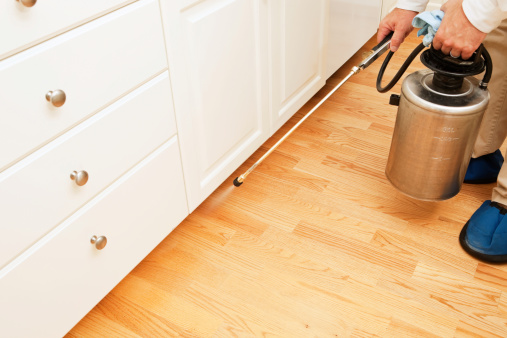Problem Pests
Pests are bad. We can help.
All homes occasionally run into problems with household pests. While most are merely a nuisance, some may bite, sting or transmit disease. A few may even cause serious structural damage which can impact the value of your house.
If you are experiencing these problems, NEPMA can you help you find a qualified professional in your area and advise you on how to choose the right pest professional.

Problems Caused By Pests
Below we have listed some specific problems caused by pests.
Rodents
Rats & mice can cause considerable problems including property damage. Rats & mice breed extremely quickly, so what starts off as a small infestation can quickly spread throughout the premises, causing damage and posing a fire risk from potential damage to wiring by their constant gnawing.

Termites
Termites can seriously damage the structure of a house or building. Years ago, it was considered sufficient to have only a termite inspection performed before purchasing real estate. If there was no evidence of an active termite infestation, it was assumed that the building had no termite damage or structural damage. In some cases, there was serious termite damage to the structure of the building.
In addition to the pre-purchase inspection by an Engineer, have a termite inspection performed by a qualified termite control specialist. This specialist can recommend treatment options to control an existing termite infestation. A qualified termite control specialist can also recommend control options to help prevent future termite infestations.
Fleas
Flea bites make some animals, who are allergic to the insects saliva, so miserable that they bite and scratch themselves raw. Human bites show up as small, red, itchy bumps most commonly observed on the wrists and ankles. Fleas can carry or transmit bacterial organisms responsible for bubonic plague. They also serve as a host for tapeworms, which can live in dogs, cats or humans.
Ants
Ants are among the most prevalent pests in households. They are also found in restaurants, hospitals, offices, warehouses, and other buildings where they can find food and water. Ants often become a nuisance when they enter our homes searching for food and can cause severe structural damage when they burrow through decaying wood to nest, a common behavior of carpenter ant.
Ant management requires diligent efforts and the combined use of mechanical, cultural, sanitation, and often chemical methods of control. Different species of ants respond to management practices differently.
Indian Meal Moth Control
The Indian meal moth (Plodia interpunctella) is considered to be the most troublesome of the moths infesting stored products in the United States. They attack all cereal products, whole grains, dried fruits, and even pet foods. Damage is caused by the larvae spinning silken threads as they feed and crawl, thus webbing the particles of food together. Small moths are often noticed flying around pantries and other infested areas. Even after all sources of infested food have been eliminated, you may still need a pest professional to locate moths in different life-stages.
Dust Mites
Dust mites are second only to pollen in causing allergic reactions. Asthma, eczema and allergic rhinitis are the three main allergic diseases where the cause of most attacks has been linked to them. It is not only the dust mite that causes the problem. The allergen which causes these allergic reactions is actually a protein found in their droppings and carcasses.
Recent studies suggest that at least 45 percent of young people with asthma are allergic to house dust mites. Unlike “seasonal” allergies caused by molds and pollen, people who are allergic to dust mites often will have symptoms year round.
